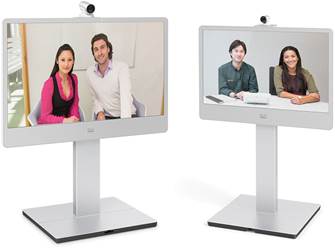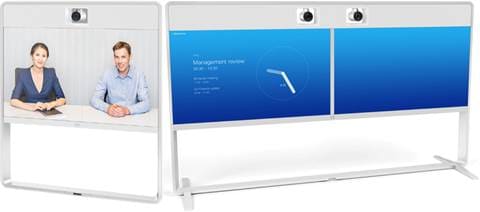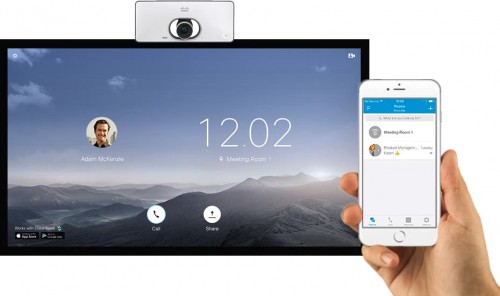
It is well proven that video collaboration can help reduce travel costs and increase productivity and innovation. As this Forbes Insights research paper concludes: “Video energises communication and collaboration across all industries and all sizes of companies. It not only reduces or eliminates travel costs, but it also opens up new opportunities for business growth, faster time to market, increased productivity and accelerated innovation. Video makes face-to-face interactions a reality again—a powerful way to build business relationships. Bringing people together at critical moments is crucial to extend and scale the value of organisations’ core resource: people.”
The historic challenges with video have been the lack of user adoption and the cost and complexity of the infrastructure required. Adoption of video is intrinsically linked to the user experience, and that is where Cisco has made a huge impact with the latest generation of video endpoints designed to be easy to use for anyone. Cisco’s design-led and user experience focused approach has been validated by receiving eight prestigious Red Dot Awards for these products.


There have been a lot of improvements to Cisco’s on premises architecture for video which makes it simpler to deploy, and the breadth of features and flexibility available with this will still be preferred by many businesses. However the growing trend for cloud delivered SaaS (Software as a Service) now gives organisations a choice to go with hybrid deployments (on premises infrastructure components coupled with cloud services, providing a unified user experience) or pure cloud.
The two key services required for video to work are bridging (to allow for three or more parties in a meeting) and endpoint registration. Both of these are now available as SaaS delivered from the Cisco Collaboration Cloud. Cisco Collaboration Meeting Rooms (CMR) Cloud has been available for a while and provides video bridging integrated with WebEx Meeting Center, allowing people to join from any SIP or H.323 device, Microsoft Lync / Skype for Business, and browser or mobile with the WebEx client. And as of 1st July in Europe, Cisco video room systems can now register to the Cisco Collaboration Cloud.
Cisco Spark Room Systems supports cloud registration of the latest generation of video room systems running Spark Room OS. The supported systems include codecs, multipurpose room and desktop endpoints: SX10N, SX20N, SX80, MX200 G2, MX300 G2, MX700, MX800, DX70, DX80. Set up of an endpoint is extremely simple and only takes a few minutes — power on, enter an activation code when prompted and it will register with the Cisco Collaboration Cloud.
As well as not requiring any on premises infrastructure, Spark Room Systems takes user experience to a new level. The Cisco Spark app (mobile and desktop) can automatically pair with Spark Room OS systems using ultrasound through the Spark Proximity feature. This allows users to interact with the video endpoint through the Spark app — call Spark contacts, search the corporate directory and start and join meetings in Spark rooms along with CMR Cloud meetings. Active calls can be moved seamlessly between Spark Room OS endpoints and the Spark app, allowing people to join a meeting from wherever they are and move around. Content can be shared wirelessly from the Spark desktop app so there’s no need to physically connect your PC or Mac to the endpoint.
For iPhone and iPad users this is going to get even better this autumn with the release of iOS 10. Cisco and Apple announced a strategic partnership in 2015 and have since been working together closely to provide the best business mobility experience possible. With iOS 10 the Spark app will leverage new iOS APIs on the iPhone and iPad to allow users to make video calls from the native dialler. This means you will be able to start a video call on a Spark Room OS endpoint (through Spark Proximity) in the same way as you place a normal call on your iPhone and iPad (using contacts, recent and favourites) — everyone knows how to make calls on their personal devices so it can’t get any easier than that!
There has never been a better time for businesses to use video collaboration. Cisco provides a best in class video user experience and a full breadth of deployment options, from fully on premises through hybrid all the way to pure cloud.
1 Comments



Samsung Galaxy S5 Problem and Solution – Fixes for Problems like screen, Camera, Audio, Menu Button, Download Booster, Water Damage, Software Issues